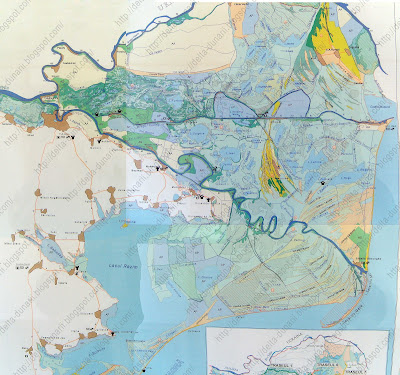
A very recent map with all regions from Danube Delta. Sorry for unavailable English version yet.
Friday, July 6
Thursday, June 28
Access in Danube Delta by Boat
0 Post CommentCall for reservation, HARBOR - phone: +40/240/511553
Passenger boats:
| Departure | Time | Days | Arrivals | Time |
| Tulcea | 13:30 | Monday, Wednesday, Thursday, Friday | Sulina | 18:00 |
| Monday, Wednesday, Friday | Sf. Gheorghe | 18:30 | ||
| Monday, Wednesday, Friday | Periprava | 19:00 | ||
| Sulina | 07:00 | Tuesday, Thursday, Friday, Sunday | Tulcea | 11:00 |
| Sf. Gheorghe | 06:00 | Tuesday, Thursday, Sunday | ||
| Periprava | 05:00 | Tuesday, Thursday, Sunday |
Starting with 15 June till 30 September, the passenger boats will follow the next schedule:
| Departure | Time | Days | Arrivals | Time |
| Tulcea | 13:30 | Monday, Tuesday, Wednesday, Thursday, Friday, Sunday | Sulina | 18:00 |
| Monday, Wednesday, Thursday, Friday | Sf. Gheorghe | 18:30 | ||
| Monday, Tuesday, Wednesday, Friday | Periprava | 19:00 | ||
| Sulina | 06:00 | Monday, Tuesday, Wednesday, Thursday, Friday, Sunday | Tulcea | 11:00 |
| Sf. Gheorghe | 06:00 | Tuesday, Thursday, Friday, Sunday | ||
| Periprava | 05:00 | Tuesday, Wednesday, Thursday, Sunday |
Hydrofoil
| Departure | Time | Days | Arrivals | Time |
| Tulcea | 14:00 | Every day | Sulina | 16:00 |
| Sulina | 07:00 | Every day | Tulcea | 09:00 |
This video was made on Mircea Clasic Passenger Boat trip
You can arrive in Romania by plane, landing on the Henri Coanda International Airport in Bucharest. After that, by car on the European road E60 (Bucuresti-Urziceni-Slobozia-Harsova-Tulcea) - 300km, or you can also arrive in Tulcea by train.
You can leave the car in one of the private parkings next to Tulcea`s harbor: Hotel Delta parking, Syndicate House parking, railroad parking, guarded and secured. The tax is 5 Euro/day/car.
Sunday, June 17
Enot Dog
1 Post CommentThe Enot Dog, Nyctereutes procyonoides, has a striking resemblance to a raccoon, but is really a member of the dog family, Canidea, and is unrelated to the raccoon. In the wild, the enot dog ranges in the wooded areas of western Europe, Romania, Russia, China, and Japan, and as far as Nova Scotia in North America. They are native to south-eastern Siberia, Manchuria, northern Indo-China, China and Japan. They were introduced to western Russia, mainly for hunting purposes, and have since spread from Russia to Scandinavia, Germany, and France.
Here is probably an unique video of an daylight apparency of this very rare nocturnal animal.
The enot dog, is perhaps one of the most unusual canids in the world. It is a dog that for all their physical appearance looks just like a raccoon, having raccoon markings and body structure. This is where the species name, procyonoides, comes from; Procyon is the scientific name for raccoon. It has a very thick body, stout legs, small rounded ears, and bushy tail. Their thick, short fur is a grizzled grey in color, with dark areas around the eyes, the legs and the tip of the tail, and lighter areas on the muzzle and underneath their tail. The canine teeth are small, so most of their chewing is done through the molars. Enot dogs have no close living relatives in the dog family, though they show both behavioral and anatomical links to the bat-eared fox (Otocyon megalotis).
The enot dog's diet depends on where they live and the season. They are omnivorous, and will eat just about anything they can find, from rodents, lizards, frogs, ground birds, seeds, fruit, berries, insects, and spiders. They are able to eat even toxic frogs and toads. They cannot eat larger prey due to weak dental structure; the teeth of raccoon dogs are very small in comparison to other canids. Also, their carnassials are weaker, but they have more developed molars for chewing plant matter. Which is a good indication that if there were an abundance of plant foods, they could easily become vegan. Enot dogs are primarily nocturnal animals, and they start to hunt for their food after sunset, taking a break at around midnight. They are rarely seen during the daytime. On their search for food, they can cover up to 12 miles (20 km) in one night. In areas where they live along the shoreline, they hunt on the beach at night for shellfish and carrion washed ashore by the tides.
Enot dogs tend to live in pairs. Mating season commences when they emerge from their burrow, with the female being receptive for 6 days. After a gestation period of 60 days, about 5 cubs are born, but births of as many as 12 have been recorded. The male enot dog stays with the female, helping to raise the cubs. The male helps by providing food, for his mate first, then for the cubs as well when they begin to eat solid food. The cubs are weaned after 50 days. In some areas, several pairs have dens in close proximity to one another, but do not seem to establish any sort of territorial boundaries. The young are sexually and physically mature at one year old. Enot dogs do not live for more than about 3-4 years in the wild, which we believe is primarily due to being extensively hunted for their fur. Enot dogs can live for 11 years in captivity.